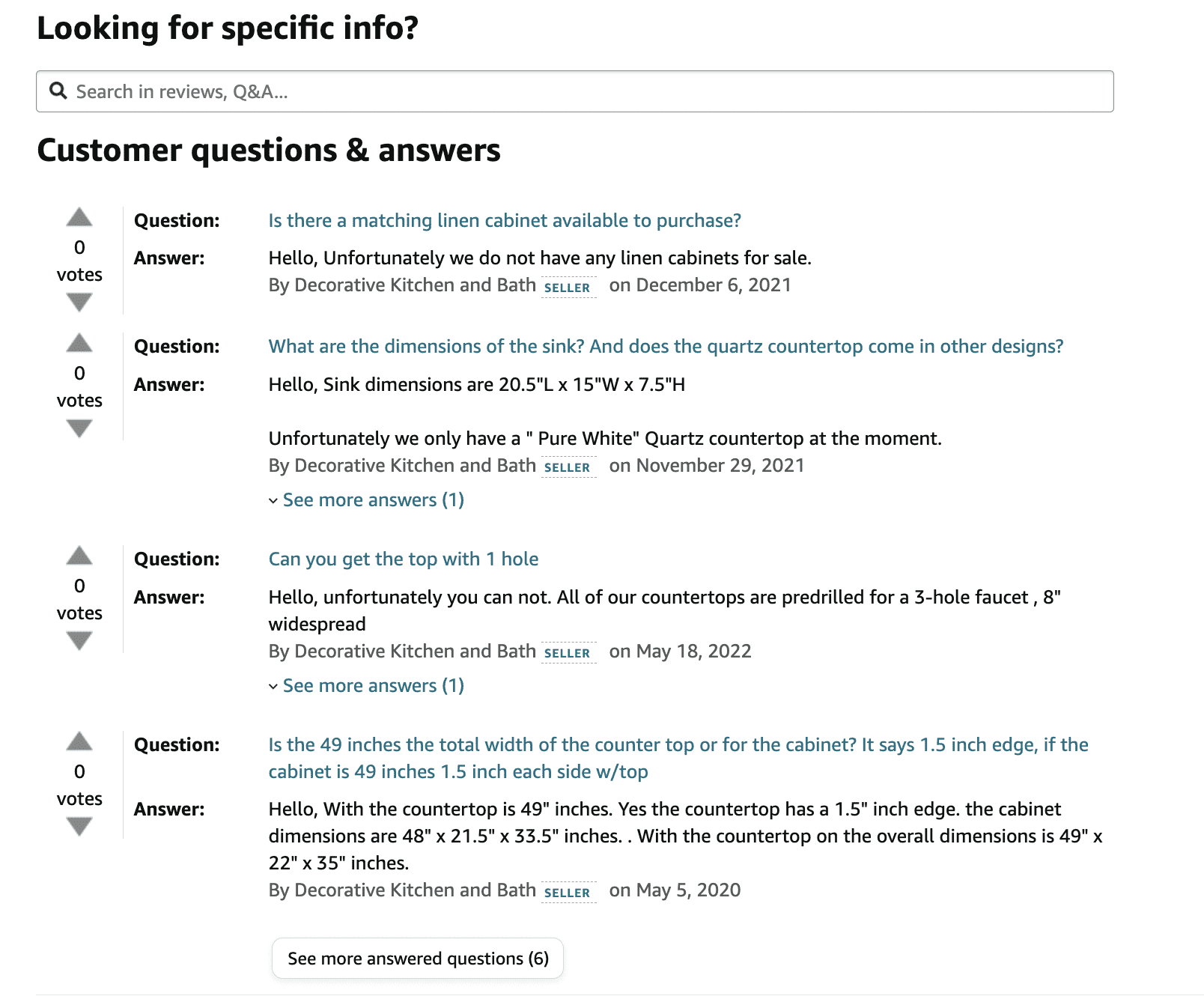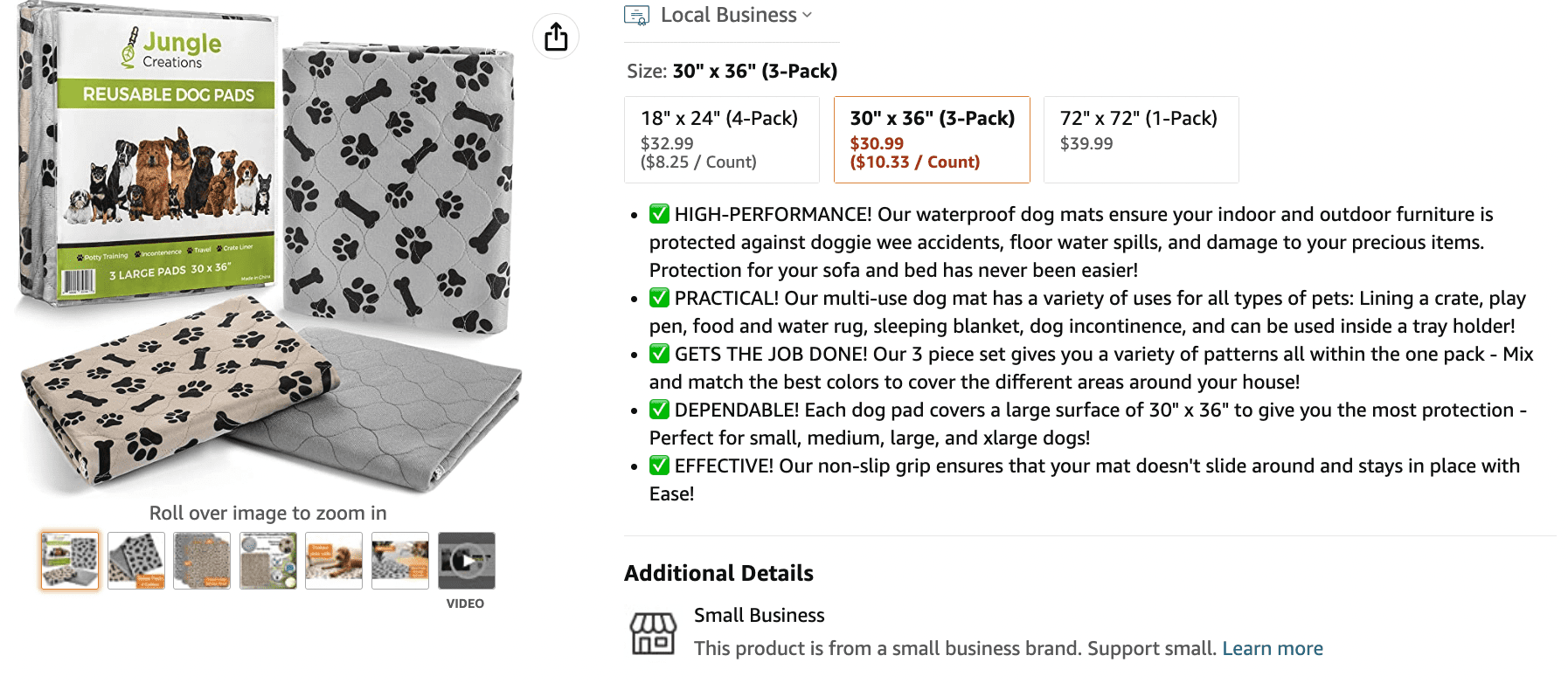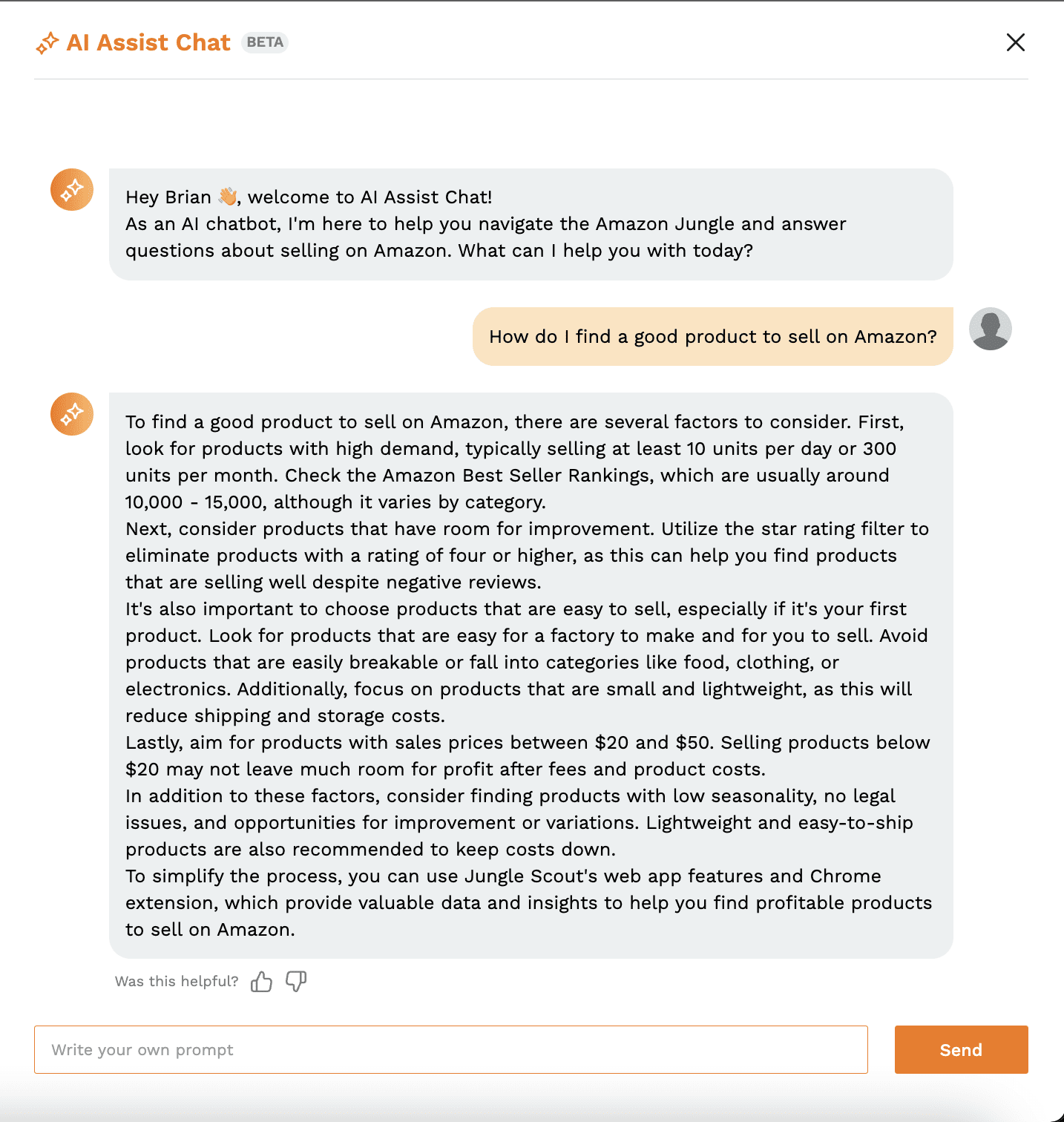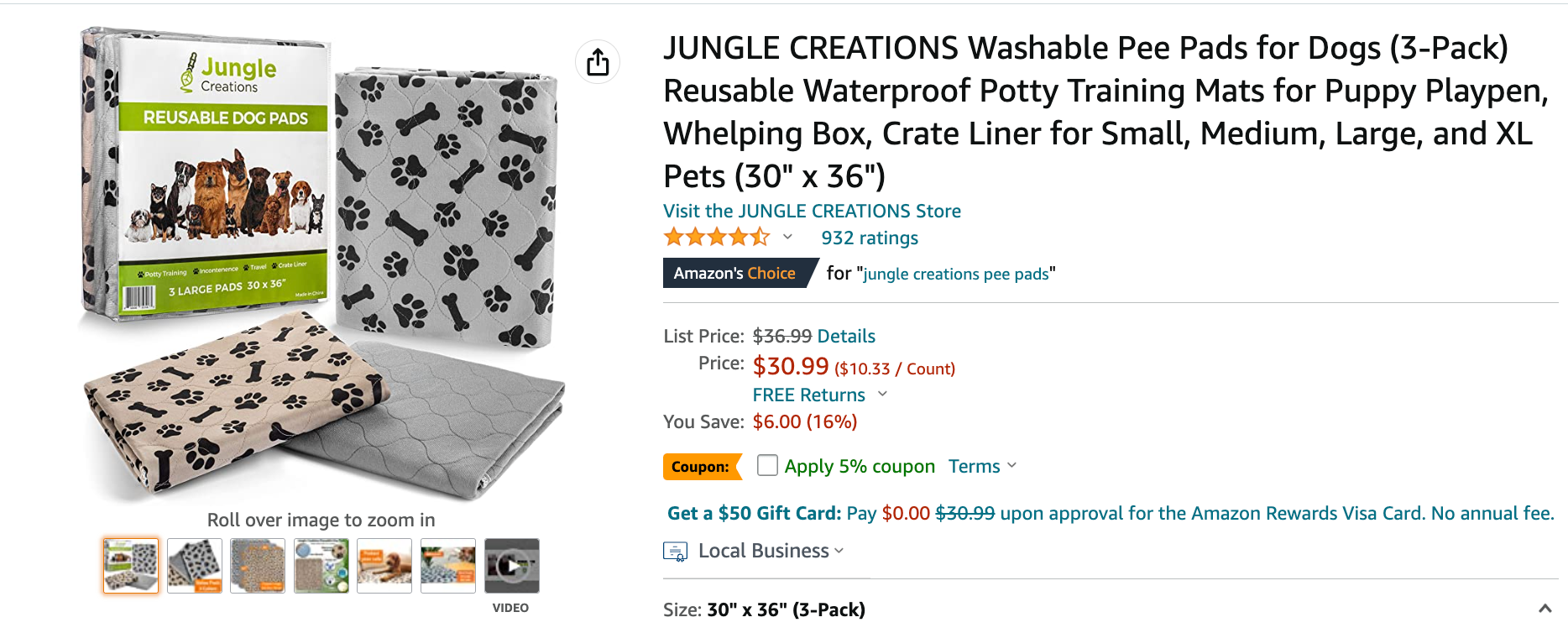Whether you are a new Amazon seller or million-dollar brand, writing a “good” Amazon listing is crucial to your success.
Of course, your listings need to be keyword optimized, but if the copy is bland, uninspiring, or missing information, you’ll likely miss out on sales to your competitors. Not all Amazon sellers are comfortable writing their own Amazon listings — as maybe they’re not strong writers, don’t understand how to conduct proper keyword research, or simply don’t have the time.
In this article, we’ll provide you with six tips on writing a good, compelling Amazon listing.
Plus, we’ll share our #1 solution to help you create optimized Amazon product listings in one click with our new AI integration – making your life as a seller easier, and saving you time!
- Why your listing copy is important
- How to write an Amazon listing that converts
- What to do if you hate writing Amazon listings
Why your listing copy is important
In short, your listing copy tells the customer exactly what your product is, what it does, why they need it, why it’s better than the competition, and how it will help solve their problem. If you can do that effectively, your listing will have a higher chance of converting.
Optimizing your listing with relevant keywords will help customers find your products,, but without strong listing copy, or a reason why someone should buy your product, you may not receive the sales you expect.
READ MORE | Amazon Keyword Research: Your Guide to Success in 2023
When customers scroll through your product listing, they’re looking for more information about the product, about your brand, and why they should buy this product over another. Sure, branding and imagery are also very important, but if you don’t provide vital information about the product, that customer likely won’t convert.
If they’re left looking for more information, or have more questions that are not answered within your listing copy, they’ll leave and go take a look at one of your competitors.
Now let’s go over what makes a good Amazon product listing.
How to write an Amazon listing that converts
The last thing you want is for a potential buyer to exit your listing and go purchase from one of your competitors.
When writing your listing, imagine yourself as the customer. What would you want to know? What information are you looking for? How will this product help me or solve my problem? Ask yourself these types of questions.
Not only that, you need compelling language to help conceive the customer why they need your product. Here are six essential tactics for writing a good Amazon listing.
NOTE: This article is specifically about writing effective copy for your Amazon listings, not keyword optimization. If you want to learn more about keywords and other optimization strategies, check out our article on listing optimization: Amazon Product Listing Optimization in 2024.
1. Include detailed information
This may seem obvious, but make sure to include detailed information about your product such as dimensions, materials, colors, size, or usage.
For certain products, information such as product dimensions can make or break a sale. You’d be surprised how many listings don’t include this simple, yet important, detail.
2. Help the customer picture themselves using the product
Adding detailed information is important, but don’t simply list out the specs or features of the product. Paint a picture of why that information is important or why it is useful.
For example, if you are selling a bathroom vanity, knowing the product dimensions is very important to a customer. Instead of simply mentioning the dimensions, also include how or where the product would work for them.
Instead of writing:
- This vanity is 24” W x 18” D x 33” H
Write something like:
- Your new bathroom vanity is 24” W x 18” D x 33” H, making it the perfect size for your small bathroom or powder room for guests – Provides ample storage for toiletries without compromising space.
While the first example does give the customer the dimensions they’ll need, the second example gives them another reason why this product will work for them.
Make your description compelling, informative, and to the point without being overly sales-y.
3. Answer customer questions
Think about what types of questions your customers would be asking about your product when writing your listing.
Take a look at your competitors listings, go to the “Customer questions & answers” section and see what actual customers are asking.

Not all customers will ask a question on a listing before purchasing. If they can’t find what they are looking for, they’ll look elsewhere. Make sure you answer the most important questions you can find within your own product listing.
4. Know your customer
When writing a product description, you need to know who your customers are. If you are selling a niche product such as a bath toy for kids ages 2-6, you would cater your listing copy specifically to parents of small children. You could do so by adding cutesy, humorous language that would make that toy more appealing to that type of customer.
If you’re selling tools to contractors, perhaps your description would be best if it was straight to the point without being too pushy or gimmicky.
Though if you are selling something that could reach a wider audience, such as a cheap silverware set, trying to cater to a very specific audience wouldn’t be the correct strategy. You could say something like, “This 20-piece silverware set is perfect for college students, small apartments, first-time home buyers, hotels, outdoor kitchens, and much more.”
5. Make your listing easy to read
While keywords and compelling copy are obviously important, you don’t want to go overboard with text throughout your listing. No one wants to read large blocks of text so be sure that your bullet points and descriptions are short and to the point.
In fact, in Amazon’s listing guidelines, they suggest keeping your bullet points under 1,000 characters total — or about 200 characters per bullet point — as it improves readability.
It is possible to be persuasive and concise while still including relevant keywords.
Check out the bullet points on one of Jungle Scout’s products, Washable Pee Pads for Dogs.

Each bullet point is around 200 characters each. It is okay if you go over, but don’t do it by much or else the bullet point will look too bulky.
6. Solve a problem
Does your product help solve a problem that a customer may have? Make sure you clarify that within your product listing copy. First state what the common problem is and how your product will solve it.
Using the Jungle Creations Washable Pee Pads as an example again, check out this description within the A+ Content:

In our listing, we point out a common problem customers have with other products similar to ours. What we portray in the bullet points and A+ Content, is how this product will be the perfect solution to their problem.
What to do if you hate writing Amazon listings
Writing a good Amazon listing takes time, effort, and strong copywriting skills.
We know you’d rather focus on generating more sales or expanding your product line than making keywords fit into your product listings. Especially at scale, keeping your listings optimized and competitive takes up a lot of your time — time that you could be spending on more important aspects of your business.
Half of Amazon sellers say listing optimization is a big current challenge for them – so let Jungle Scout help write the listing for you!
Jungle Scout’s AI Assist integration within Listing Builder lets users leverage artificial intelligence to automatically generate content for their Amazon listings in just one click.
AI Assist will take the top keywords from your keyword lists (found with Keyword Scout) and generate listing content, including your product’s title, bullet points, and product description.
Listing Builder will properly integrate your keywords in your listings where they make the most sense for not only Amazon’s algorithm but also Amazon’s customers.
What can AI Assist help with?
- Learning the ropes: If you are a new seller and don’t have much experience writing Amazon listings, AI Assist can help give you a clear and quick start to creating your listing. See how keywords impact your listing optimization and learn how to write for the Amazon shopper audience.
- Generating ideas: AI Assist can also help new sellers with idea generation. The AI-generated content may have product benefits you hadn’t thought of.
- Translating: For those selling in the U.S. marketplace who are not native English speakers, AI Assist is perfect for sellers who don’t speak or write fluently in English. It may save sellers the cost of a translator and reduce the risk of language errors.
- Scaling your business: If you are an established seller with tons of products, you probably don’t have the time to write listings for new products. AI Assist will help Amazon businesses manage and scale your listing optimization.
Jungle Scout users can also use AI Assist Chat, which will provide you with tips and information about selling on Amazon.

Get ready to have the best Amazon listings
Writing a good, compelling, and optimized listing can be tough but we hope this article will help you create the best listings possible. And if you don’t want to write them yourself, check out Jungle Scout’s AI Assist tool within Listing Builder!

 1 Comment
1 Comment
One comment on “How to Write a Great Amazon Listing — and How AI Can Help”